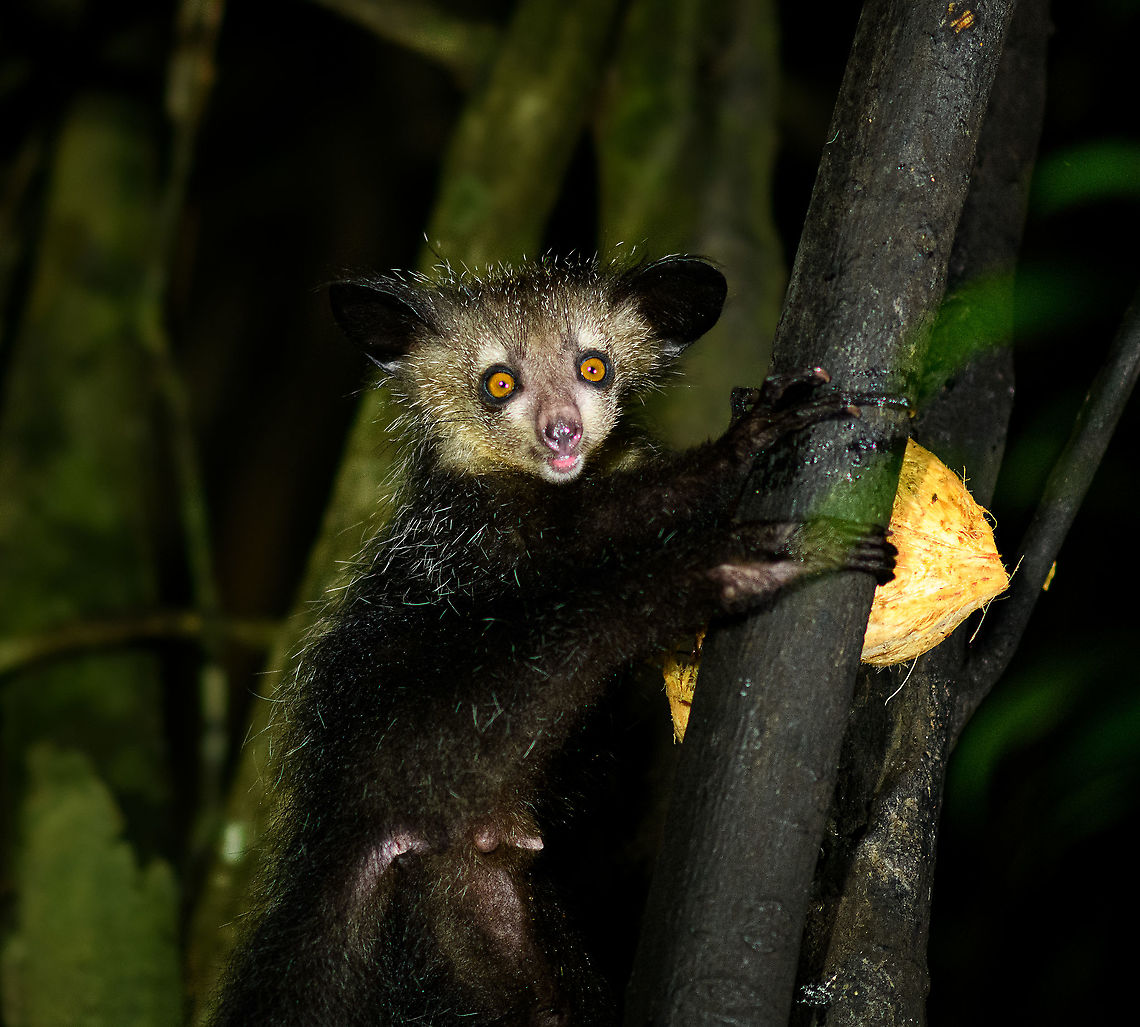 Promoted
Promoted
Aye-aye - 19, Palmarium, Madagascar
Here it is, the Aye-Aye, the primate woodpecker, rodent, bat or "heh heh", Malagasy for "I don't know".
"I don't know" is exactly the first thing that popped into my brain upon seeing it. My brain struggled to understand what it was seeing, despite having read about Aye-ayes at a basic level. It just doesn't register or fit into any boxes.
My second thought was that if I would not know any better, I'd go along with the local superstition that this is a demonic animal.
Science didn't really know either in earlier times. This creature first was considered a rodent, based on its teeth that perpetually grow and thus must constantly be worn down. It took a long time for it to be considered a primate, and specifically a lemur.
A very weird primate. Its ears are huge and have inner ridges similar to bats, optimized for echolocation, making this the only primate to use this.
Echolocation comes into play when its taps its lengthy 3rd finger rapidly on tree tunks to locate insects/larvae inside. Next, it uses its strong teeth to gnawl a hole into the trunk. Finally, it uses its extremely lengthy 4th finger to rapidly pull out the contents, like a machine gun, using a special hooked nail.
I had always imagined the Aye-aye to be kind of like a Koala: small, slow, and vulnerable. I was wrong at every level. It's pretty large, combined with the tail above 1m in length. It's very fast and escapes a scene in about 2 seconds. It's teeth and fingers are not careful or fragile tools, they're like power tools.
The backstory: from Palmarium, on dry nights, you can take a boat to an uninhabited island. On the island live 6-8 Aye-ayes. They are typically in the canopy of a mangrove forest. Coconuts are strategically placed at a lower level to lure them down. Flash lights and camera flash are disallowed, yet when the lure action is succesful, a relatively weak area light shines on the feeding Aye-aye, which does not seem to disturb them.
Photographing them is challenging due to the lack of flash and the light source being quite weak, but it can be done with some special measures.
To Henriette and me, the Aye-aye was this year's trophy and a proper closure on 3 years of Madagascar, so I'm going to be generous in sharing many shots of this fantastic animal. We're not done with the set though, not quite yet.
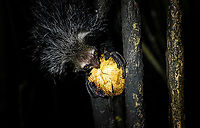
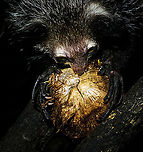
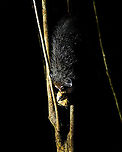
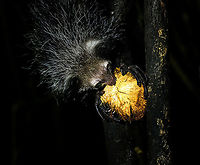
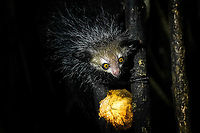
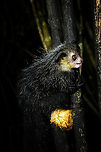

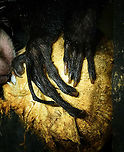
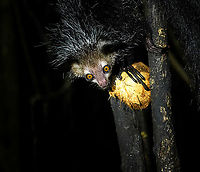
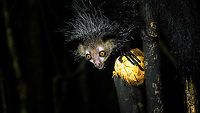
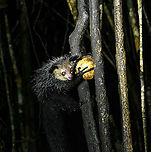
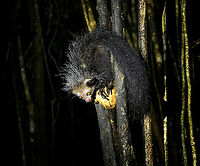
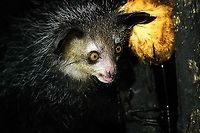
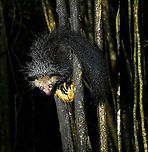

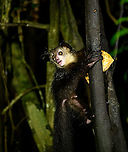
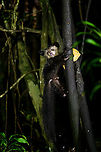
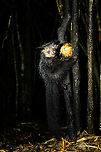
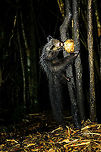
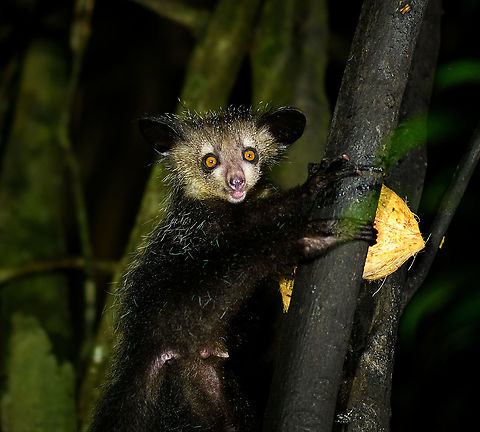
The aye-aye (Daubentonia madagascariensis) is a lemur, a strepsirrhine primate native to Madagascar that combines rodent-like teeth that perpetually grow and a special thin middle finger.

comments (19)
Posted 6 years ago, modified 6 years ago
"To give you an idea of its size, here's one next to a slightly smaller Aye-aye"
"Lemurs were not very thrilled with this news" Posted 6 years ago
"grub dipstick...terrifying for the grub by the way"
"this is why the aye-aye doesn't wear pants...that's a recipe for chafing."
"if someone gives you the finger, they might just be hungry..."
Lol, so great! And, now I know it's a t-t and not a peepee. Nice to be educated :D. Posted 5 years ago
Meet the creature with the coolest middle finger on the planet! The aye-aye (Daubentonia madagascariensis) is found only on Madagascar, and with a nose-to-tail length of up to 80 cm (31 in) and weighing about 1.8 kb (4 lbs), it is the world’s largest nocturnal primate. From those diminutive numbers, we can clearly infer that being the “largest” doesn’t mean that the aye-aye is actually “large”. And, the aye-aye is also considered to be one of the world’s weirdest primates…A peculiar anomaly. Although, we prefer to refer to the aye-aye as eccentric and completely awesome!
Why are they unusual? Aside from having a facial expression that makes them always look astonished, this endearing creature has some really cool features! First, it has huge ears with ridges on the inner surfaces, which allow the aye-aye to echolocate like a bat! Next, they have large, lower incisors that are fused together. These teeth are incredibly strong and never stop growing, much like beaver teeth. In fact, their teeth are so strong that they can chew through concrete walls! Aye-ayes also have enormous, bushy tails and hairs that bristle when they are agitated. Adding to the list of eccentricities, aye-ayes have a nubby, sixth digit, called a pseudo-thumb, which helps them grip branches. Oh, and the females have their nipples located in their groin. Yes, really!
So, onto what may be their coolest feature—their long, gangly middle finger. They use this exceptional finger to locate insect larvae living inside trees. While rapidly tapping on the wood, they rely on their remarkable ears and the power of echolocation to pinpoint the location of unsuspecting larvae. This technique is called percussive foraging. Once located, they tear a hole in the wood with their teeth, and then use their middle finger to pluck out a grub! This specially adapted middle finger sits in a ball-and-socket joint, like the human shoulder, and can swivel 360° in any direction! And, as a disclaimer for anyone doing the math: since the aye-aye technically has six fingers, it doesn’t really have a middle finger. But, the sixth is really just a tiny nub, so consider it as you will.
So, for the sad news: the aye-aye is endangered. It is one of Madagascar’s most endangered species of lemur, and is yet another magnificent creature whose sad situation is correlated to human activity. There are two main reasons for their endangered status. First, habitat loss: the forests of Madagascar are being destroyed at an alarming rate...beyond “alarming”, actually. Second, aye-ayes are killed, a lot. They are killed by farmers seeking to protect their crops, by poachers, by people trying to provide food for their families, and because the aye-aye is considered by some to be an omen of evil that should be killed on sight. Some natives believe that if an aye-aye points its middle finger at a person, then that person is marked for death.
The aye-aye is currently protected by law, which is great. But, this protection doesn’t guarantee that habitat loss, poaching, and the killing of aye-ayes will cease. It doesn’t eradicate superstition that paints the aye-aye as the Grim Reaper of Madagascar. And, it hasn’t given the people, who hunt these animals to provide food for their families, any other sustainable alternatives. But, the aye-aye is certainly not doomed for extinction because conservationists don’t give up! So, can these fantastic creatures be saved? The hopeful answer is: “Aye-aye, captain”. {Spotted in Madagascar by JungleDragon founder, Ferdy Christant} #JungleDragon #Madagascar #Ayeaye #Daubentoniamadagascariensis Posted 5 years ago
Seriously, wonderful writing as always! Posted 5 years ago
The idea is to expose an IT system (for example a server) with intentionally weak security. This will attract attackers (like a honeypot), and this is used to learn about the attackers, their identities, their mode of operation, and so on. Posted 5 years ago